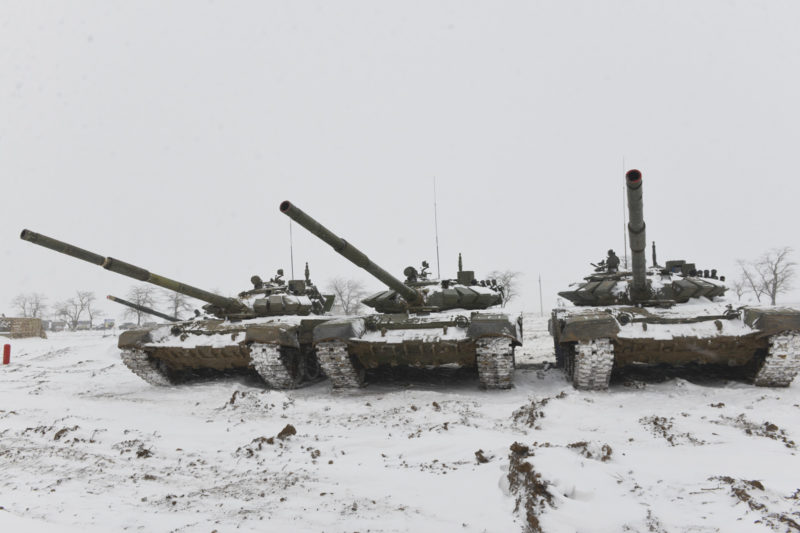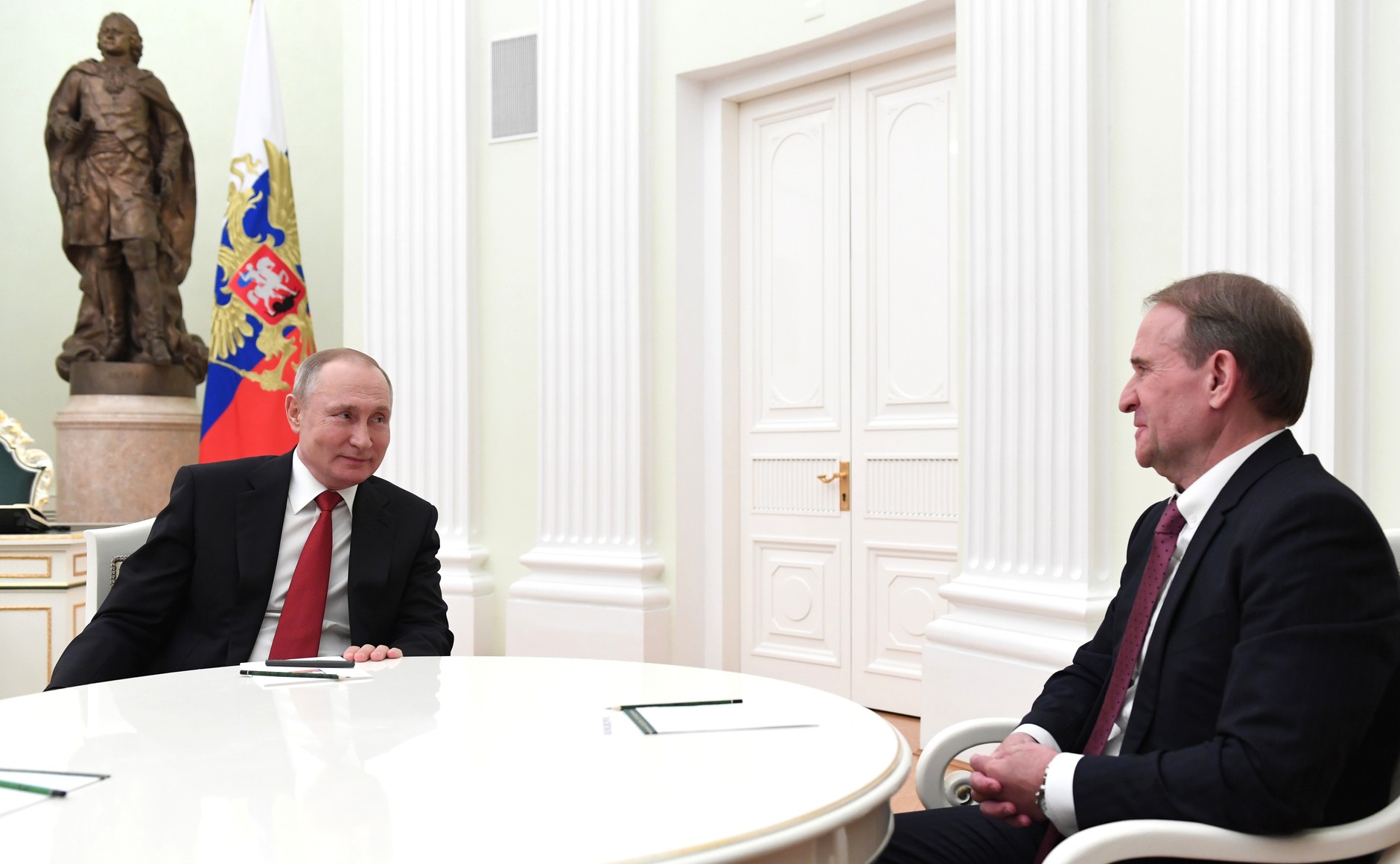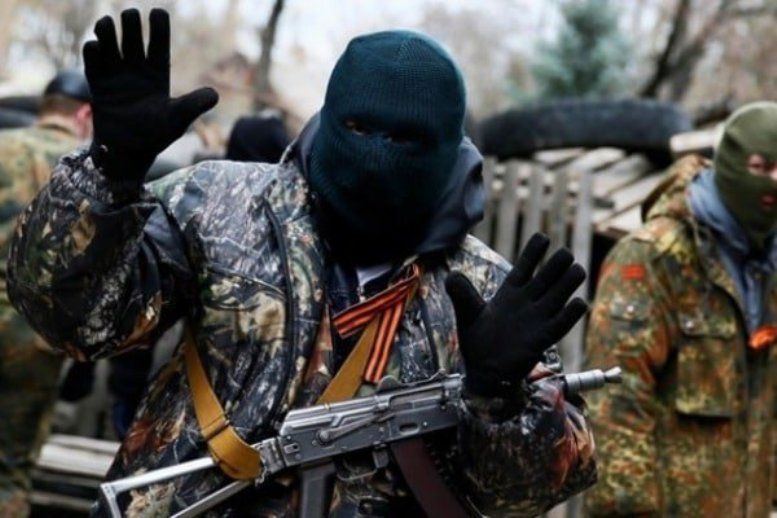According to RFE/RL's project Donbas.Realii, Ukraine can now fully destroy two Soviet-style motorized rifle divisions using only the weapons supplied by allies. A late Soviet motorized rifle division could have over 200 tanks with hundreds of transport vehicles. Here are key takeaways from the article.
Javelins on combat alert in Donbas
Ukraine received its first Javelin man-portable anti-tank missiles from the US a few years ago now. They haven't yet been used in combat in the warzone in the Donbas, only in training. Javelin operators have been deployed in the war-torn Donbas region for several months and are now an important link in the Ukrainian army's defenses. The crews of Javelin operators have been on duty with a full ammunition load on the front.
"Last fall the Armed Forces of Ukraine had four dozen launchers and a little more than three hundred missiles, by the end of January they have had some 150 launchers with more than a thousand munitions," Donbas.Realii reported.

"We can see that tank and mechanized units are being massed on our borders. That is, the enemy (Russia, - Ed.) counts on a powerful blow and rapid deep advance into our defense. The means provided to us will prevent the enemy from not moving quickly but also from moving at all. An example supporting my statement is the introduction in the Ukrainian Army of Stugna anti-tank guided missile systems (Ukrainian-made wired anti-tank missiles, - Ed.). After they appeared on the front line, enemy tanks stopped emerging there," said Viktor Kevliuk, an expert with the Center for Defense Strategies.
First NLAW launches
Ukraine has received more than 2,000 pieces of the Main Battle Tank and Light Anti-tank Weapon, or NLAW, from the United Kingdom, which gave the Ukrainian Army many more capabilities to counter armored attacks.
The first group of 40 Ukrainian instructors who are going to teach using the NLAW has finished their own training at the Yavoriv training ground in Lviv Oblast. The British instructors were teaching them for 5 days, and the training ended up in a live-fire practical shooting.

"My impressions are the very best. Now, any serviceman can oppose a tank on his own and destroy it completely with one shot, that's, in fact, impressive,” said Maksym Tolochyk, a serviceman of the Armed Forces of Ukraine.
The would-be instructors fired from shelters and armored vehicles at distances of 300-600 meters, which is almost the NLAW's maximum range.
“Training doesn't require any highly professional specialists. You can teach anyone to use these weapons, from the rank and file to the highest-rank personnel, any soldier. Accordingly, every serviceman can use it in both defensive and ambush operations, as well as in attacks,” says Maksym Tolochyk.
According to Donbas.Realii, who referred to the Ministry of Defense, the NLAW anti-tank missiles will appear in the front-line units very soon.
Weapons from allies of Ukraine perfect for urban warfare
The main focus of military aid that Ukraine has received from its allies in recent weeks is on defense, particularly in the context of urban fighting. The mentioned NLAW is perfect for urban warfare, and so are the M141 Bunker Defeat Munition grenade launchers sent by the US. The recent shipments of US military aid had at least several hundred M141s.
Currently, the Donbas front line often goes through urban areas. For example, the government-controlled city of Avdiivka has the frontline running through a suburban summer cottage area with destroyed houses and bypassing an industrial zone. This is where the US anti-bunker weapons can be useful right now, as Russian-hybrid forces use the ruins of dachas or summer cottages as fire nests.

Actually, the situation hasn't changed much in the Donbas in recent days, weeks, and even months. The Russian buildup didn't change major threats in the Donbas warzone. With the large distances between the opposing positions, drone-adjusted artillery is the main threat. Meanwhile, with shorter distances, various anti-tank missile systems can usually operate. Finally, snipers are the main threat at the positions divided by only a few hundred meters, like Avdiivka's industrial area.
"There is no perfect silence every day. Constantly, some shots are heard left and right. Though, there still is deathly danger, because the enemy often... carries out the provocative fire, luring us to their snipers, so we are told in advance not to fire at random, but do it only if we know where the fire goes from. We able to respond and carry out, accordingly, fire in response," Ukrainian soldier Ivan, who serves in Avdiivka, told Donbas.Realii.
Stingers to replace Soviet Igla MANPADS
Soon, the Ukrainian army is going to receive Stinger MANPADs from Lithuania, Latvia, and the United States. This is the first anti-aircraft weaponry that the allies are going to send to Ukraine.
"It's a last-ditch weapon: if we consider the most negative outcome when our troops are defeated,.. large air defense systems will be either destroyed or captured, unlike portable systems. A fighter who'd decide to fight on will take this weapon and go with it," said Oleksandr Yeroshchev, MANPADs instructor.
Currently, Ukrainian troops have Igla MANPADs, the Soviet analog of Stinger, in the Donbas warzone for the case when a threat would come from the air. Its primary targets are low-flying aircraft and helicopters Military aviation hasn't been used in the Donbas since 2014. Drones have been used instead, against which Igla is useless.
"If we take the combat potential of a Soviet-era motorized infantry division, which was quite powerful (our enemy's current military units have much less strength today and have lower combat capabilities), then the means shipped to us by the allies are enough to burn to ashes two divisions,” says military expert Viktor Kevliuk.
Read more:
- How territorial defense is being built in Ukraine: first month’s result
- How prepared is Ukraine’s army to fight Russia in 2022?
- Why does Germany refuse to export arms to Ukraine?
- more US weapons arrive in Ukraine
- Ukraine now ready to fight Russia, “unlike 2014,” top brass says
- US weapons arrive to Ukraine
- Russia moving “significant parts” of its far-eastern military units towards Ukraine: digital sleuths
- What we know about the “light anti-tank weapons” UK started supplying to Ukraine
- Germany keeps blocking arms exports to Ukraine
- UK weapons come to Ukraine





